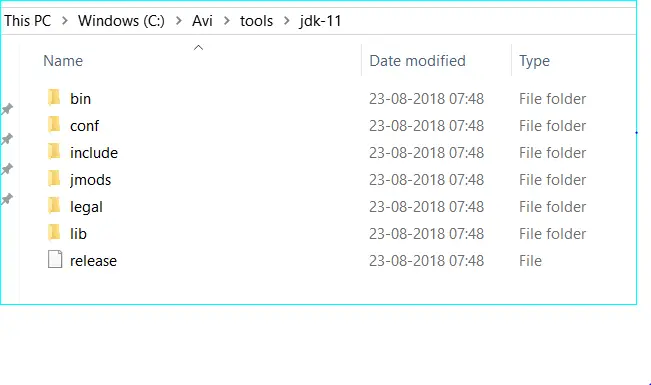

- INSTALL OPENJDK 11 MACOS HOW TO
- INSTALL OPENJDK 11 MACOS INSTALL
- INSTALL OPENJDK 11 MACOS ZIP FILE
- INSTALL OPENJDK 11 MACOS MANUAL
- INSTALL OPENJDK 11 MACOS SOFTWARE
For example, let's suppose These are the two last lines of my ~/.zshrc file: export JAVA_HOME="/usr/local/jdk-11.0.16.1+1" This should be located in your shell initialization file. Point it to the OpenJDK directory, not to its /bin subfolder, as JAVA_HOME will not only be used to determine the executables' location. Set JAVA_HOME to where you extracted your OpenJDK installation. My command (for Linux) was this one: sudo tar -xf OpenJDK11U-jdk_圆4_linux_hotspot_11.0.16.1_1.tar.gz -C /usr/local.
INSTALL OPENJDK 11 MACOS SOFTWARE
If you want a more conventional location, extract it to /usr/local/, which is where software manually installed by the user conventionally goes in POSIX systems.

In case you can't or don't want to use admin permissions, extract it somewhere in your user space (like ~/.openjdk). Then, extract the compressed file appropriate to your OS.
INSTALL OPENJDK 11 MACOS ZIP FILE
You will need Administrator privileges to extract the zip file to this location. It will create the folder for the JDK installation, with \bin as one of its sub-directories. Store the extracted files in the Directory Treeįirst, extract the zip file into a folder ( C:\Program Files\OpenJDK would be the educated choice.Why would you choose this option over the much easier methods just described above? Maybe you don't have administrator rights on your current machine or maybe you are setting up your own strategy to manage multiple Java versions. Select your preferred version and JVM ( OpenJDK 11 LTS on HotSpot JVM if you are unsure) and download the compressed JDK. But to keep it simple we're using Adopt Open JDK once again. They might even offer their own installer file.

You can get your compressed OpenJDK from a number of different vendors such as Microsoft, Red Hat, Intel or anyone offering their fork of OpenJDK.
INSTALL OPENJDK 11 MACOS MANUAL
Still Pretty Easy, Mostly Manual Mode – for Windows, macOS, and Linux That's it, the open-source community saves the day again.
INSTALL OPENJDK 11 MACOS INSTALL
Sudo apt install openjdk-13-jre-headless # installs for java 13 Sudo apt install openjdk-8-jre-headless # installs for java 8 Your OS will very likely have its own OpenJDK package available in the repository manager.įor Ubuntu/Debian, the package names are usually named like openjdk-jre-headless. This method also needs admin access, of course. Very Easy Semi-Automatic Mode – for Linux Remember to install ALL features, as it won't work out of the box if you don't allow the installer to set JAVA_HOME. Look for your OS, choose the packaged installer (. You'll be redirected to a page with a list of install links. Head over to the community-driven, Eclipse Foundation-supported Adopt Open JDK website to get the link for your installer (if you are in doubt, just go with OpenJDK 11 LTS on HotSpot JVM).Īlso, Eclipse is the main open-source Java IDE in case you didn't know. If you are in a hurry and just want a plug-and-play install with an easy uninstaller and automatic setup, that's fine – I won't judge. Keep in mind that this will require administrator access.
INSTALL OPENJDK 11 MACOS HOW TO
How to Install OpenJDK Very Easy Semi-Automatic Mode – for Windows and macOS Here, you'll learn how to install OpenJDK on Windows, Mac, and Linux in a few different ways. Since this is the easier and cheaper way, it's the one we're going to be using in this tutorial. OpenJDK is licensed under GPL-2.0, and it consists of a Java Virtual Machine and a java-bytecode compiler. In a nutshell, there are two coexisting branches of Java: the proprietary, closed-source Oracle Java and the community-maintained open-source OpenJDK.


 0 kommentar(er)
0 kommentar(er)
